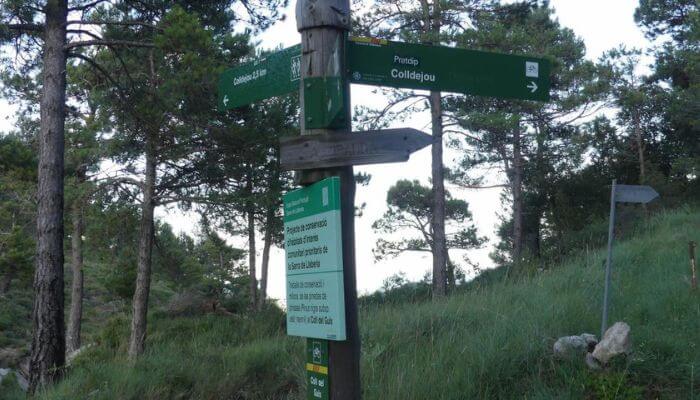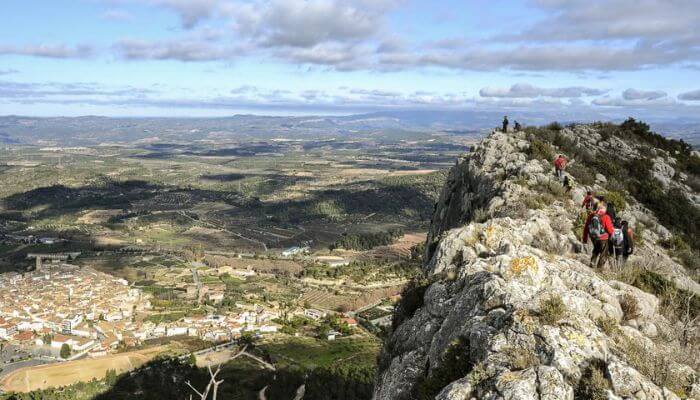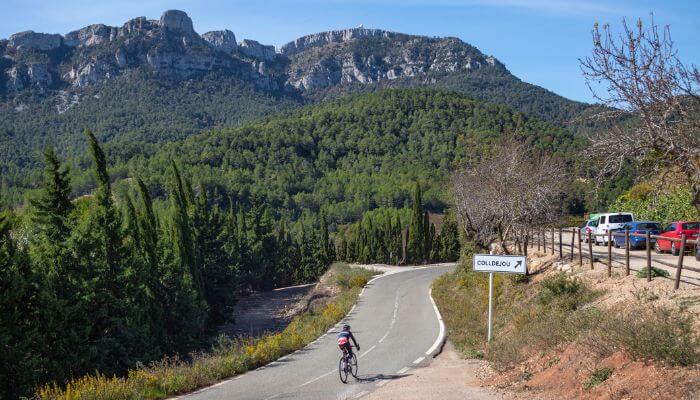Contenidos:
- 1 Have you heard of the Llaberia natural reserve?
- 2 What is the Llaberia Natural Reserve and where is it?
- 3 The landscapes, flora and fauna on the Serra Llaberia reserve
- 4 Activities in the Llaberia Natural Reserve and hike trails
- 5 Visitor centres, picnic areas and other services
- 6 Plan your stay and discover this unique environment
Have you heard of the Llaberia natural reserve?
The Costa Daurada is home to some of the most amazing and spectacular paradises on the planet. Today we’re going to introduce you to this unique natural reserve. We’re sure you’ll want to visit and will fall in love.
What is the Llaberia Natural Reserve and where is it?
Since UNESCO classified Terres de l’Ebre as a unique natural and human space in the world, quality international tourism has been coming to visit this environment more and more every day. There are two main reasons for this, which are located just 30 kilometres from each other: the Ebro Delta and the Dels Ports massif.
In 2016, the international association Global Green Destinations classified these lands as one of the 100 best sustainable tourism destinations in the world.
But there is more on offer than just these two unique ecosystems. There are many other protected areas, such as the Serra de Llaberia, which complete the puzzle of this magnificent map of landscapes, fauna, flora and ancient customs.
Also known as the Serra de Segús, the Serra de Llaberia is a Protected Natural Area. This mountainous landscape is surrounded by the Prades foothills to the north, the coast to the east, and the Vandellós and Tivissa peaks to the south. And finally, its western border is marked by the Ebro river and the Priorat.
Its imposing steep reliefs, ravines and abrupt cliffs make up this massif that is composed of the sierras of Segús, Montalt and Mola de Colldejou. Its limestone has also led to the formation of numerous caves, chasms and grottoes.
All these rugged features and its rocky profile, with peaks of up to 1000 metres, are what have kept this habitat almost unchanged for centuries.

The landscapes, flora and fauna on the Serra Llaberia reserve
The Serra de Llaberia offers some incredibly authentic landscapes, particularly between the seasons of autumn and spring. It is then that the mistral blows and the views are clearer. What’s more, during these seasons you can also experience more active fauna.
There is only one village within the protected area, called Llaberia, which is only inhabited in summer, but there are many other rural communities in the surrounding area that are rooted in the past. There is an abundance of farmhouses and all kinds of traditional constructions, as well as ancient Iberian settlements.

The forest, originally made up of holm oaks and deciduous trees, has gradually evolved as a result of fires, towards vegetation made up of oak groves, Aleppo pines, rosemary and heather. Although there are still a few holm oaks and typical riverside trees dotted around. In the lower areas, olive groves and vineyards alternate with crops of kermes oak, mastic and chickpeas.
There is also an abundance of birds, including woodpeckers and birds of prey such as golden eagles, Bonelli’s eagles and choughs. Among them you will also see great tits, long-tailed tits, treecreepers and brushes flying through the air.
Some of its most special fauna are its native amphibian species, such as the giant leaf frog, the common midwife toad and the spotted toad. And let’s not forget the reptiles. The bastard snake, the ladder snake, the horseshoe snake and the snub-nosed viper live alongside the ocellated lizard and the Mediterranean tortoise.
Activities in the Llaberia Natural Reserve and hike trails
The Serra Llaberia is divided by a number of well-signposted paths and trails. Most of them start from or lead to the GR7 and vary in difficulty. Despite the complex nature of the area, the risk of getting lost or having any mishap is minimal.
Most of these routes can be followed on foot, mountain bike or horseback and many of them are directly connected with the magical legends of these lands. As such, you can follow in the footsteps of the guerrilla fighter Carrasclet, discover the fortress of Torre de Rosanes or cycle along the Dòvia ravine.
But one of the main attractions for visitors at the Llaberia Natural Reserve is watching the diverse bird life, which shows itself without any shyness or fear. And this is unsurprising as it is their territory and they have little to fear from the few humans that appear there.
Rural and cultural infrastructure is abundant in the area, with themed itineraries, interpretation centres and museums. These activities offer some of the best attractions, with diverse architecture ranging from mediaeval style and dry stone to modernist mansions. And, of course, the agricultural and livestock traditions, particularly the goat herding and oenology, never fail to surprise with their unique nature.

Visitor centres, picnic areas and other services
You will have no trouble finding excellent rural accommodation in the surrounding villages. The Serra de Llaberia consortium, or Segús, has a visitor welcome and information point. Within the same protected area, you will also find picnic areas, fountains and perfectly signposted itineraries.
Plan your stay and discover this unique environment
We are confident that, if you decide to visit the Llaberia Natural Reserve, you’ll never want to leave. That’s why we recommend that you plan your stay as soon as possible.




